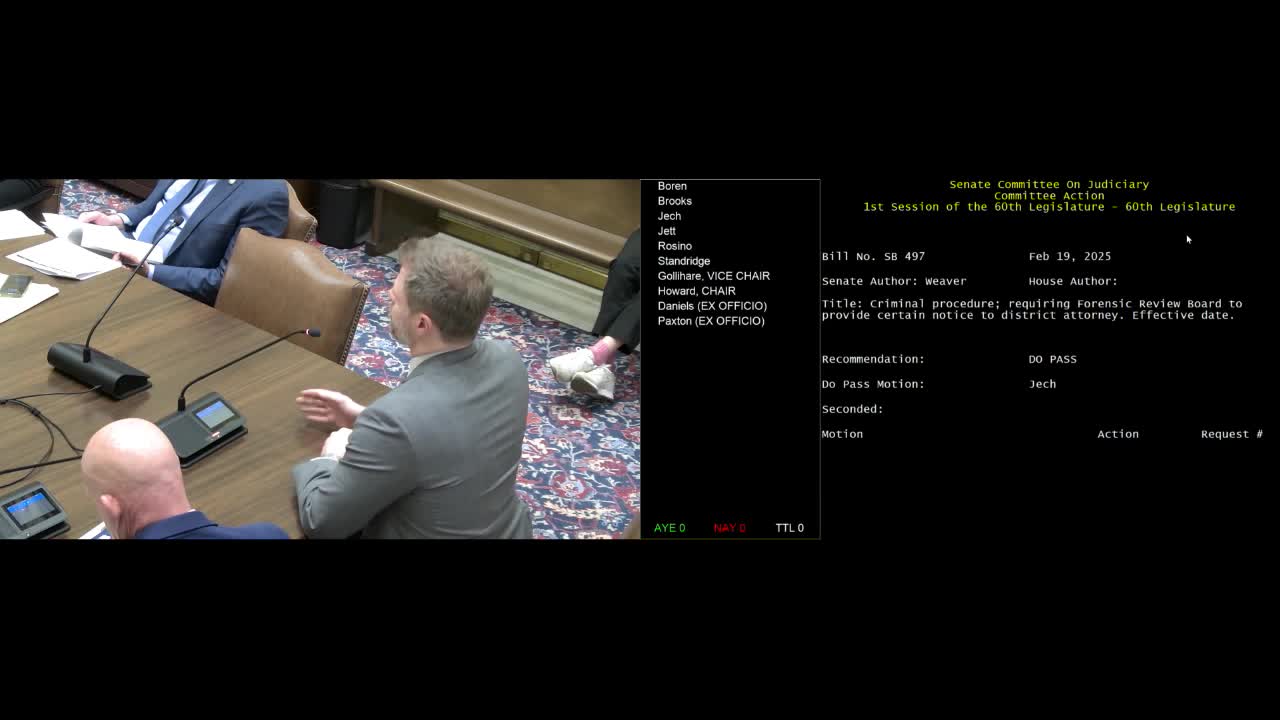Oklahoma Senate debates reinstating 10 Commandments monument on Capitol grounds
February 19, 2025 | 2025 Legislature OK, Oklahoma
This article was created by AI summarizing key points discussed. AI makes mistakes, so for full details and context, please refer to the video of the full meeting. Please report any errors so we can fix them. Report an error »

In a recent meeting of the Oklahoma State Legislature, lawmakers engaged in a heated debate over Senate Bill 380, which seeks to reinstate the Ten Commandments monument on the grounds of the state Capitol. The bill proposes to fund the monument through private donations, aiming to restore a symbol that was removed in 2015 following a Supreme Court ruling that deemed its presence unconstitutional under the Blaine Amendment.
Proponents of the bill argued that the Ten Commandments hold significant historical value and are integral to the moral foundation of the United States. They cited various Supreme Court cases, including Van Orden v. Perry and Trinity Lutheran Church v. Comer, which they believe support the constitutionality of displaying religious symbols in public spaces. Supporters emphasized that other states have successfully maintained similar monuments, suggesting a precedent for Oklahoma to follow.
Opponents, however, raised concerns about the implications of reinstating the monument, arguing that it could violate the First Amendment's establishment clause, which prohibits the government from favoring one religion over another. They pointed out that a previous attempt to repeal the Blaine Amendment was rejected by voters in 2016, indicating a lack of public support for such religious displays on state property. Critics also highlighted the potential for discrimination against other faiths, questioning whether the bill could lead to a slippery slope of religious favoritism in public spaces.
The discussion also touched on the broader cultural context, with some legislators referencing the historical significance of the Ten Commandments in American society. They argued that the monument reflects the state's heritage and aligns with the values expressed in the state’s preamble, which invokes the guidance of a higher power.
Ultimately, the bill faced a vote, resulting in its failure with three votes in favor and five against. This outcome reflects ongoing tensions within the legislature regarding the intersection of religion and government, as well as the complexities surrounding the interpretation of constitutional rights in relation to public displays of faith.
As the debate continues, the future of religious symbols in Oklahoma's public spaces remains uncertain, with potential implications for similar legislative efforts in the future. The discussion highlights the delicate balance lawmakers must navigate between honoring historical traditions and upholding constitutional principles.
Proponents of the bill argued that the Ten Commandments hold significant historical value and are integral to the moral foundation of the United States. They cited various Supreme Court cases, including Van Orden v. Perry and Trinity Lutheran Church v. Comer, which they believe support the constitutionality of displaying religious symbols in public spaces. Supporters emphasized that other states have successfully maintained similar monuments, suggesting a precedent for Oklahoma to follow.
Opponents, however, raised concerns about the implications of reinstating the monument, arguing that it could violate the First Amendment's establishment clause, which prohibits the government from favoring one religion over another. They pointed out that a previous attempt to repeal the Blaine Amendment was rejected by voters in 2016, indicating a lack of public support for such religious displays on state property. Critics also highlighted the potential for discrimination against other faiths, questioning whether the bill could lead to a slippery slope of religious favoritism in public spaces.
The discussion also touched on the broader cultural context, with some legislators referencing the historical significance of the Ten Commandments in American society. They argued that the monument reflects the state's heritage and aligns with the values expressed in the state’s preamble, which invokes the guidance of a higher power.
Ultimately, the bill faced a vote, resulting in its failure with three votes in favor and five against. This outcome reflects ongoing tensions within the legislature regarding the intersection of religion and government, as well as the complexities surrounding the interpretation of constitutional rights in relation to public displays of faith.
As the debate continues, the future of religious symbols in Oklahoma's public spaces remains uncertain, with potential implications for similar legislative efforts in the future. The discussion highlights the delicate balance lawmakers must navigate between honoring historical traditions and upholding constitutional principles.
View full meeting
This article is based on a recent meeting—watch the full video and explore the complete transcript for deeper insights into the discussion.
View full meeting
